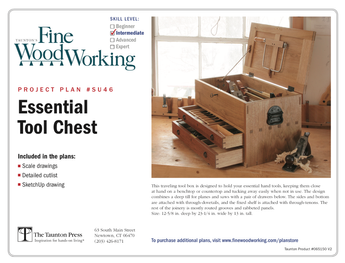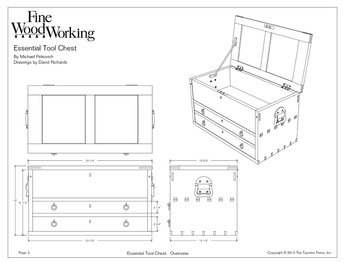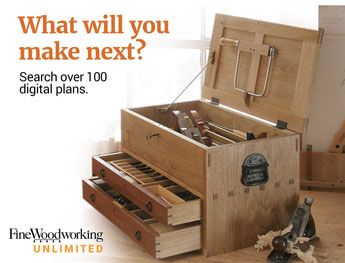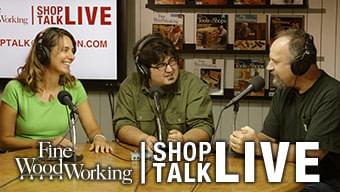“transfering” a table design – Peckovich table from a board
A few years ago, I built Pekovich’s Table from a Board. Great project and I learned a good deal.
Management has asked me to build her a new “coffee table.” I’ve looked around and haven’t really found a design I like. I’m wondering if there’s a way to “copy” the design of the Pekovich table to a lower sitting, rectangular coffee table. In my mind, I think the legs would need to be a bit more robust (bigger, squatter). And, I’m not sure about the width / height of the aprons under the top. The table I did a while back is cherry, but I’ve some nice pecan that’s searching for a project…
Thoughts? Reactions? Ideas?
A very Merry Christmas / Happy Holiday Season to one and all.














Replies
I don’t know the specific piece you are mentioning. Having said that, I have taken design cues from prior pieces and incorporated them into other pieces. What do you like about the initial piece you built? Write it down and then mark the key essentials you want to transfer over into the new piece. In terms or proportions, there are a number of whole number ratios that are pleasing to the eye and if you do some reading from Tolpin and Walker you can learn a bit more about ratios that work well (Lost Art Press books). Speaking of LAP, they also have a 100 year old book they reprinted that talks about good design elements and it’s worth getting. In terms of height, I’d bet most coffee tables are a certain height plus or minus an inch. Then, pick one dimension that is important for the space, be it length or width. The other dimension will be a ratio of that. As for the legs, I don’t have good feeling but if you go out to a few websites and look at furniture, you might get a feeling for what range of leg sizes exist. I’d also pull from the original piece. In terms of strength, wood is amazingly strong and if you look at what some chairs get away with when you sit on them, you at least have an idea of how little wood you need in a leg to mechanically survive. I’m willing to bet whatever you want to fit the design will be fine from a strength perspective. Maybe shaker nightstands can help give you an idea. Good luck and let us know how it turns out.
The theme (or conceit, if you will) of the Pekovich table from a SINGLE board was the uniformity of the color of the final piece and of the thought put into getting the long grain for the 4 table legs from the appropriate parts of that one board.
My version of it ended up with really skinny legs at the bottom as I tried to get the shape that Pekovich achieved and I am certain the legs will snap were someone to sit on it. Seems like you have already considered this.
The other distinctive feature of the Pekovich table is the beautiful transition in the shape of leg at the knee / apron. Would be interesting to see how that translates to the thicker legs you probably will use.
For what it is worth, I really like Kevin Rodel's Limbert style coffee table. I followed his plans from FWW and made it in qs white oak as designed and it is beautiful. Don't know whether pecan works for that sort construction.
I've updated my original post for minor items. Thank for the commentary so far.
I built a coffee table recently from curly cherry - see photo. I built it with a beveled glass top, but it would look good with a solid top too. Overall dimensions are 38” x 30” x 16”, but these can be scaled to whatever you want. Legs are 2”x2”. Aprons are 2”. Lower rails start off 3 1/4” wide with the graceful arch reducing this to 2” at the center. Decorative spindles are added using mortise strips (see FWW #315).
Beautiful piece. Curious - do the mitered corners have splines?
Thanks. Yes, I used a biscuit joiner to spline the 45 deg miters of the picture frame top. I used the largest biscuits I could to strengthen these joints.
It's absolutely possible to use Mike's table as inspiration for your coffee table. And you are correct, you'll need to adjust the proportions of the legs, aprons, top, basically everything. When I design a table, I start with the top dimensions and work my way down. I'm sure some people will flame me for saying it but I use the Golden Ration as rough guide for basic dimensions but ultimately go with what looks pleasing to the eye. I also look at other tables to get an idea of size and proportion. I see Mike's table as Shaker inspired so I'd look at other Shaker inspired coffee tables (the Shakers didn't make coffee tables) to get a better idea of dimensions and proportions. I've made several versions of the same Shaker inspired coffee table except one had a drawer and the others didn't. That's something to consider as adding a drawer changed the depth/width of the apron in order for the drawer to be practical. Sketch out different versions of what you'd like to build. When you think you've settled your ultimate design, draw it full size to get a better idea. It's also fun and instructive to make a scale model. I like using the trick that Mike and Ben discussed on STL. Make a full size mock up of a quarter of the table (one leg, half length pieces of the front and side apron and a quarter of the top) then prop it up against two mirrors held at right angles to each other. You'll get the illusion of a full table. I use whatever scraps and construction lumber I have on hand. It's a cool trick.
Good luck with your table project and happy holidays.
Thank you all!